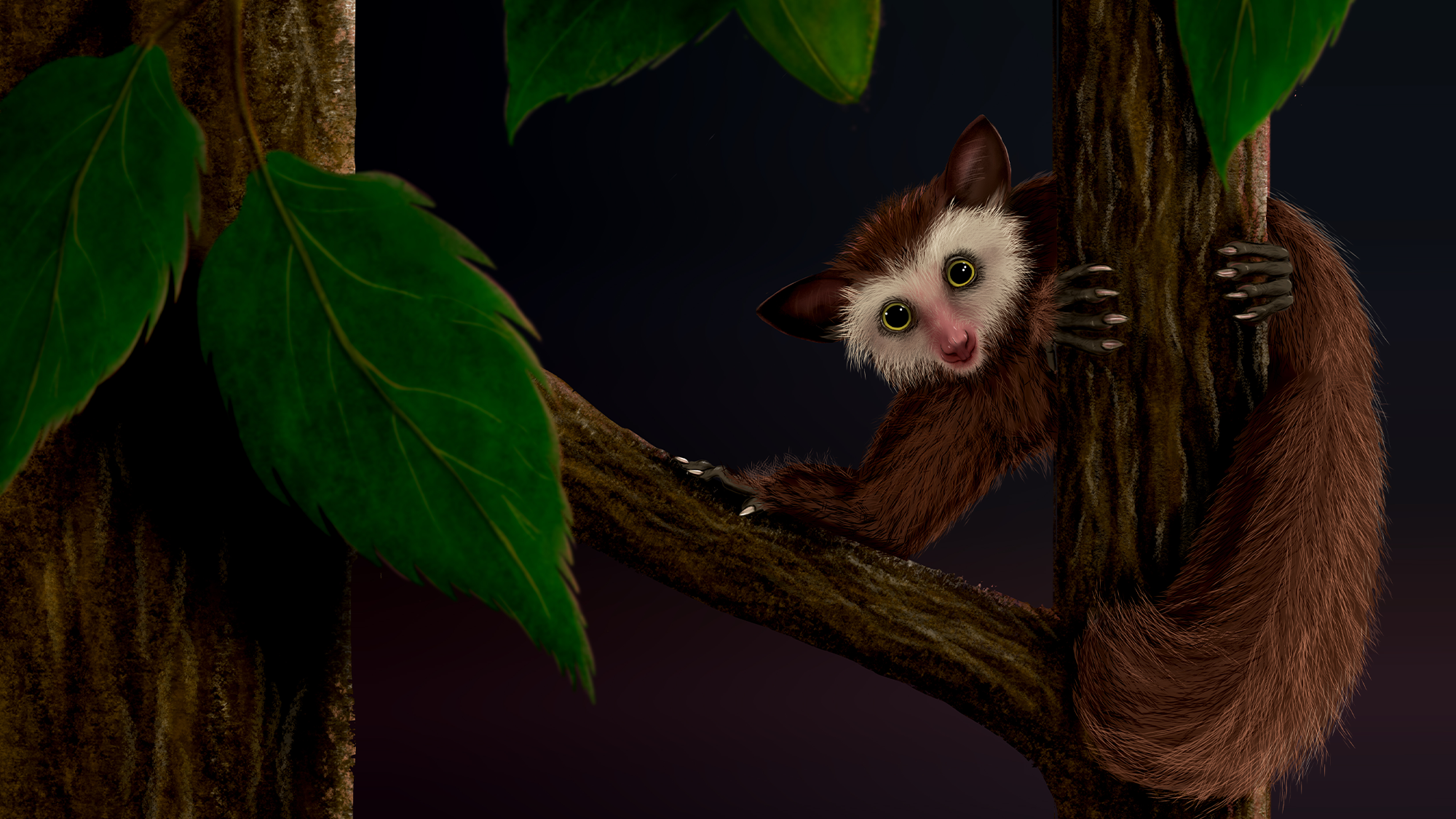

Humans are the only primates currently living in the wild in North America, but that was not always the case. The continent was once home to non-human primates, including big-eyed tarsier-like animals called omomyiforms and long-tailed critters called adapiforms. About 30 million years ago, a lemur-like creature named Ekgmowechashala was the last primate to inhabit the continent before Homo sapiens arrived. In a study published November 6 in the Journal of Human Evolution, fossil teeth and jaws shed some new light on this mysterious creature.
[Related: 12-million-year-old ape skull bares its fangs in virtual reconstruction.]
From China to Nebraska
Understanding the origins of North America’s primates has been a paleontological puzzle. It’s been unclear whether they evolved on the continent or arrived from somewhere else via land bridges. The first first primates in North America date back about 56 million years at the beginning of the Eocene Epoch. Scientists believe that the primates like Ekgmowechashala generally flourished on the continent for over 20 million years.
Ekgmowechashala was about five pounds and only one foot tall. They lived in what is now the American Plains just after the Eocene-Oligocene transition. At this time, a huge cooling and dying event made the continent much less hospitable for primates. Ekgmowechashala went extinct about 34 million years ago.
For the study, paleontologists first had to reconstruct Ekgmowechashala’s family tree with the help of an older “sister taxon,” or a closely related group of animals. Both groups generally share a branch on their family trees, but diverged at some point and have different lineages. This sister animal originates in and the team named it Palaeohodites, which means “ancient wanderer.” The fossils were collected by paleontologists from the United States in the 1990s from the Nadu Formation in Guangxi, an autonomous region in China. The fossils closely resembled the Ekgmowechashala material that had been found in North America in the 1960s, when the primate was still quite mysterious to North American paleontologists.
The Palaeohodites fossil potentially helps resolve the mystery of Ekgmowechashala’s strange presence in North America. It was likely a migrant to the continent instead of being the product of local evolution.
“Due to its unique morphology and its representation only by dental remains, its place on the mammalian evolutionary tree has been a subject of contention and debate. There’s been a prevailing consensus leaning towards its classification as a primate,” study co-author and University of Kansas PhD candidate Kathleen Rust said in a statement. “But the timing and appearance of this primate in the North American fossil record are quite unusual. It appears suddenly in the fossil record of the Great Plains more than 4 million years after the extinction of all other North American primates, which occurred around 34 million years ago.”
[Related: These primate ancestors were totally chill with a colder climate.]
The Ekgmowechashala fossils found in the US during the 1960s include an upper molar that looks very similar to the Palaeohodites molars found in China, according to study co-author and University of Kansas paleontologist Chris Beard. The team from Kansas closely analyzed the fossils to establish evolutionary relationships between the American Ekgmowechashala and its cousin Palaeohodites.
The paleontologists believe that Ekgmowechashala did not descend from an older North American primate that survived the climate shift roughly 33 million years ago that caused other North American primates to go extinct. Instead, Ekgmowechashala’s ancestors likely crossed over the icy Beringian region that once connected Asia and North America millions of years later.
Rising from the dead
Ekgmowechashala is an example of the “Lazarus effect” in paleontology. This is where a species suddenly appears in the fossil record long after their relatives have died off. It is a reference to Lazarus who, according to New Testament mythology, was raised from the dead. It is also a pattern of evolution seen in the fossil record of North American primates, who went extinct about 34 million years ago.
“Several million years later Ekgmowechashala shows up like a drifting gunslinger in a Western movie, only to be a flash in the pan as far as the long trajectory of evolution is concerned,” Beard said in a statement. “After Ekgmowechashala is gone for more than 25 million years, Clovis people come to North America, marking the third chapter of primates on this continent. Like Ekgmowechashala, humans in North America are a prime example of the Lazarus effect.”
The past is prologue?
Studying the way primates were affected by previous changes in climate can provide important insight to today’s human-driven climate change. Organisms generally retreat to more hospitable regions with the available resources or end up going extinct.
“Around 34 million years ago, all of the primates in North America couldn’t adapt and survive. North America lacked the necessary conditions for survival,” said Rust. “This underscores the significance of accessible resources for our non-human primate relatives during times of drastic climatic change.
